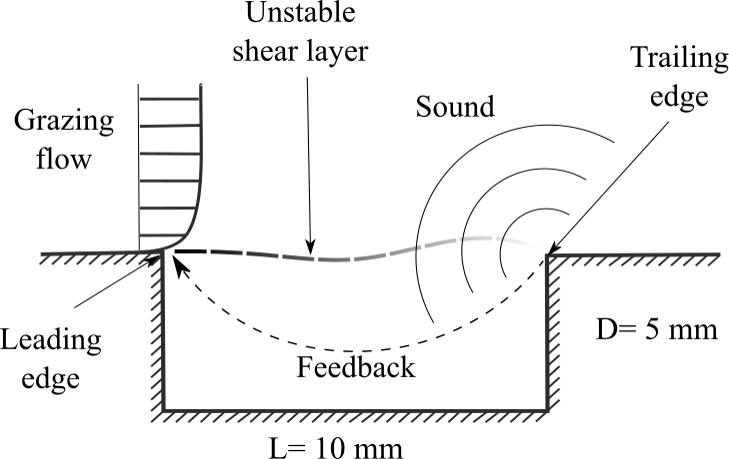Reduced order modeling of the cavity tone
The cavity tone is one of the simplest aeroacoustic configurations. The flow above a cavity creates a shear layer that is unstable and tends to oscillate. The oscillating shear layer is coupled to the cavity, which acts as a resonator. This can result in unwanted noise that can be usually prevented. This is one of the mechanisms is responsible for the noise in vehicles. However, modelling the phenomenon is really challenging. The aeroacoustic and hydrodynamic fields are strongly coupled, and these require completely different setups in simulations. The characteristic length of the hydrodynamic field is much smaller than that of the acoustic field, and this separation of scales results in a high computational cost. The research topic approaches the above problem using reduced-order models (ROMs). Using separate simulations for the hydrodynamic and acoustic fields and extracting models of a few degrees of freedom for each, we aim at coupling the simplified models. These models would yield a deeper understanding of the underlying physics and would also allow us to synthesise and develop better instruments.
If you are interested in this topic, write to Dr. Péter Tamás Nagy.

